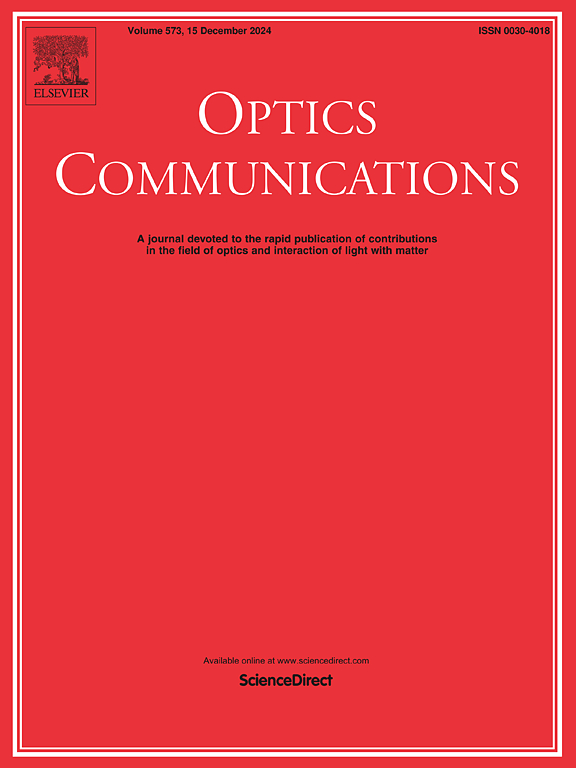Evaluating the contribution of electromagnetic nearfield gradients in TERS
IF 2.5
3区 物理与天体物理
Q2 OPTICS
引用次数: 0
Abstract
Tip-enhanced Raman spectroscopy (TERS) extends the spatial resolution of conventional Raman far beyond the diffraction limit by merging the advantages of both surface-enhanced Raman spectroscopy (SERS) and scanning probe microscopy (SPM). While most theoretical models focus on either electromagnetic (EM) enhancement or chemical (CM) effects – and typically consider only the component of the polarizability tensor normal to the substrate (αzz) – we present a fully quantum-mechanical approach that accounts for all components of the polarizability tensor, allowing to evaluate the impact of spatial inhomogeneity in the electromagnetic nearfield on the Raman response. These may become particularly pronounced for Raman modes which are, for symmetry reasons, dark in the field enhancement direction normal to the substrate (here the z-direction). By scanning a single metal atom mimicking a plasmonic tip at various positions above a flat planar sample molecule, we demonstrate how the tip-molecule interactions shift the electronic transitions and thereby modify the resonance Raman response. In particular, some off-diagonal components (αxy, αyx) become crucial for activating certain vibrational modes that are absent for the isolated molecule. Decreasing the tip-sample distance reveals how the z-directed charge-transfer states enhance TERS signals out of the molecular plane. Overall, our findings underscore the need to include different components of the polarizability tensor and to account for both EM and CM contributions for an accurate description of TERS spectra.

评估电磁近场梯度对红外光谱的贡献
尖端增强拉曼光谱(TERS)通过融合表面增强拉曼光谱(SERS)和扫描探针显微镜(SPM)的优点,使传统拉曼光谱的空间分辨率远远超出了衍射极限。虽然大多数理论模型都集中在电磁(EM)增强或化学(CM)效应上,并且通常只考虑与基材(αzz)正交的极化张量的分量,但我们提出了一个完全量子力学的方法,该方法考虑了极化张量的所有分量,从而可以评估电磁近场中空间非均匀性对拉曼响应的影响。对于拉曼模式,由于对称原因,在与衬底垂直的场增强方向上(这里是z方向),这些可能变得特别明显。通过扫描在平面样品分子上方的不同位置模拟等离子体尖端的单个金属原子,我们展示了尖端-分子相互作用如何改变电子跃迁,从而改变共振拉曼响应。特别是,一些非对角线组分(αxy, αyx)对于激活孤立分子中不存在的某些振动模式至关重要。减小尖端-样品距离揭示了z向电荷转移态如何增强分子平面外的TERS信号。总的来说,我们的研究结果强调需要包括极化张量的不同组成部分,并考虑EM和CM对TERS光谱的准确描述的贡献。
本文章由计算机程序翻译,如有差异,请以英文原文为准。
求助全文
约1分钟内获得全文
求助全文
来源期刊

Optics Communications
物理-光学
CiteScore
5.10
自引率
8.30%
发文量
681
审稿时长
38 days
期刊介绍:
Optics Communications invites original and timely contributions containing new results in various fields of optics and photonics. The journal considers theoretical and experimental research in areas ranging from the fundamental properties of light to technological applications. Topics covered include classical and quantum optics, optical physics and light-matter interactions, lasers, imaging, guided-wave optics and optical information processing. Manuscripts should offer clear evidence of novelty and significance. Papers concentrating on mathematical and computational issues, with limited connection to optics, are not suitable for publication in the Journal. Similarly, small technical advances, or papers concerned only with engineering applications or issues of materials science fall outside the journal scope.
 求助内容:
求助内容: 应助结果提醒方式:
应助结果提醒方式:


